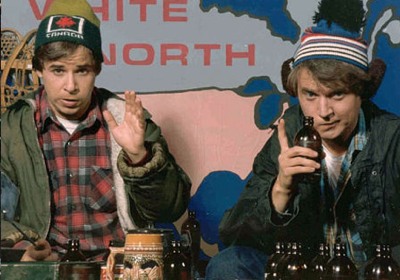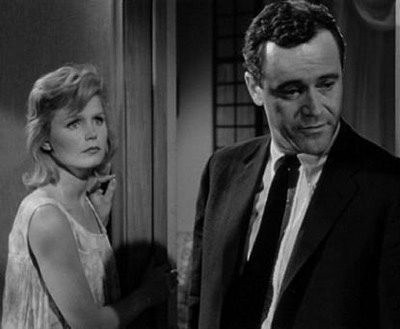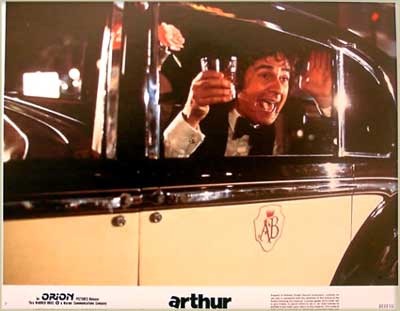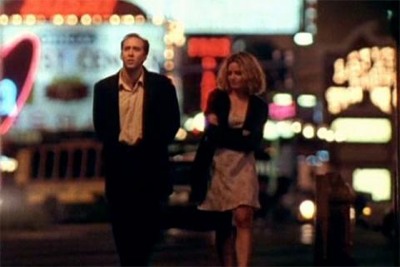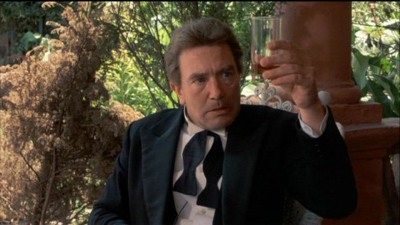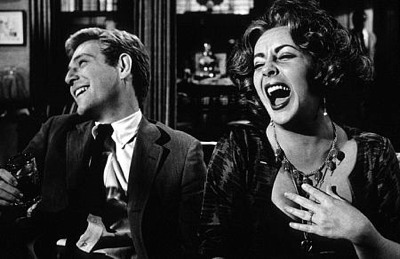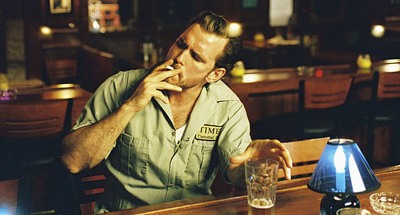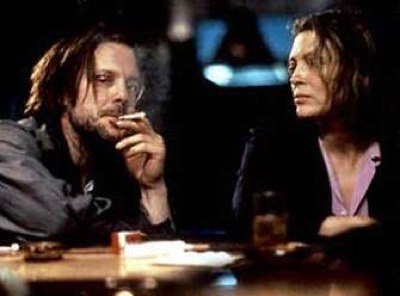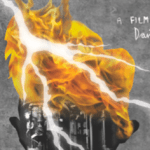 Weird Stuff
Weird Stuff  Weird Stuff
Weird Stuff  Mysteries
Mysteries 10 Tragic Disappearances and Deaths in Joshua Tree National Park
 History
History 10 Ways Childhood Really Sucked in the Old West
 Music
Music 10 Name Origins of Famous Bands from the 1990s
 Religion
Religion 10 Biggest Turnarounds by the Catholic Church
 Weird Stuff
Weird Stuff 10 Unbelievable Times Laws Had Unintended Consequences
 Humans
Humans Ten Historic Women Who Deserve Way More Credit Than They Got
 Movies and TV
Movies and TV 10 Films That Spawned Major Lawsuits
 History
History Ten Times Towns Were Wiped Off the Face of the Earth
 Creepy
Creepy 10 of the Most Disturbingly Haunted Public Houses in the UK
 Weird Stuff
Weird Stuff 10 Niche Subcultures That Are More Popular Than You Might Think
 Mysteries
Mysteries 10 Tragic Disappearances and Deaths in Joshua Tree National Park
 History
History 10 Ways Childhood Really Sucked in the Old West
Who's Behind Listverse?

Jamie Frater
Head Editor
Jamie founded Listverse due to an insatiable desire to share fascinating, obscure, and bizarre facts. He has been a guest speaker on numerous national radio and television stations and is a five time published author.
More About Us Music
Music 10 Name Origins of Famous Bands from the 1990s
 Religion
Religion 10 Biggest Turnarounds by the Catholic Church
 Weird Stuff
Weird Stuff 10 Unbelievable Times Laws Had Unintended Consequences
 Humans
Humans Ten Historic Women Who Deserve Way More Credit Than They Got
 Movies and TV
Movies and TV 10 Films That Spawned Major Lawsuits
 History
History Ten Times Towns Were Wiped Off the Face of the Earth
 Creepy
Creepy 10 of the Most Disturbingly Haunted Public Houses in the UK
Top 10 Films About Alcoholics
Alcoholism has always fascinated me more than any other drug addiction. It is separated in its legality and social acceptability, so thus there exists a legion of alcoholics far greater in number than junkies of any other sort. An entire subculture, one that’s often miserable, exists within almost every human civilization – the culture of the alcoholic. Though I’ve never suffered from alcoholism, as part of my court probation I’ve been ordered to attend, and participate in, Alcoholics Anonymous meetings multiple times a week. I’ve been going for over a year now and as a result I’ve seen a new reality to alcoholism. Though often glorified or embellished, some films offer a revealing peek into the lives of alcoholics. Keep in mind, the difference between these films and other films about substance abuse is the gigantic number of alcoholics in the world. Their lives are legal and often balked at by friends or family as an acceptable nuisance. Whether you realize it or not, it’s more than likely that you’ve known or know an alcoholic. Here are ten exceptional examples of films that revolve around alcoholics. Please comment if you’re a recovering alcoholic (or a current one for that matter) and tell us your stories or what you think about the accuracy of those films on the list which make an honest attempt at expressing the life of an alcoholic. (Or add to the list!)
This movie often gets a bad rap but I consider it to be pretty solid. Though it’s a comedy, the film doesn’t really make light of the main character’s alcoholic state. In the film the main character Willie T. Stokes is a bitter, lonely alcoholic. Willie works the holiday seasons as a mall Santa along with his dwarf friend, Marcus, who works as Santa’s elf. Every Christmas Eve, the two of them disable the security alarm after the mall closes and rob the mall safe; afterwards, Marcus returns to living with his wife, while Willie goes to Miami and spends all his money on booze. The Christmas season that year begins like any other but outside forces make sure it doesn’t end the same. The portrayal of the hopeless alcoholic lifestyle in this film gives you a really bad taste in your mouth. Though it’s embellished a fair amount, the aesthetic effect of the “alcoholism” scenes give you a dirty feeling that can be true to what “rock-bottom” looks like.
When I was researching for the list I kept running into this movie and people really seem to love it. Here is a synopsis of the premise the movie begins with. Two unemployed brothers, Bob and Doug McKenzie, are in a bind when they give away their father’s beer money and then run out of beer. The brothers place a mouse in a beer bottle in an attempt to get free Elsinore beer from the local beer store, but are told by the no-nonsense clerk—under threat of being shoved into a bottle themselves—to take up the matter at the Elsinore brewery instead. After presenting the evidence to management at Elsinore brewery, the brothers are given jobs on the line inspecting the bottles for mice. They take this opportunity to drink lots of free beer off the line; later, they surprise their parents with a van full of Elsinore products. Then, along with some ridiculously cheesy, plot twists; hilarity ensues.
This is a classic cautionary tale. Days of Wine and Roses is the quintessential piece of cinema for warning people of the dangers of alcoholism. It’s often loaned from person to person in Alcoholics Anonymous meetings all over, and is suggested viewing in many other programs designed for recovering alcoholics. The film centers on Joe Clay, who meets and falls in love with Kirsten Arnesen, a bright, non-drinking secretary. They marry, conceive a child and make a home for themselves. It’s then that Joe introduces Kirsten to social drinking and its pleasures. Reluctant at first, after her first few Brandy Alexanders, she admits that having a drink “made me feel good.” Joe slowly goes from the “two-martini lunch” to alcoholism and in due time both succumb to the pleasures and pain of alcohol addiction. The movie is old fashioned and can feel preachy, but its draw is in its honesty and genuine nature. It’s a good example of how the motives of Hollywood film making have changed over the years – it was produced with talented actors, talented filmmakers, and a solid budget for its time, and still has a positive moral motive. It’s a good film and it shows the downward spiral that alcoholism can be.
I wouldn’t say this film contains the most honest portrayal of an alcoholic, but this list isn’t necessarily based on realism. In the movie the late Dudley Moore (a real-life alcoholic) plays Arthur, a thirty year old alcoholic who will inherit 750 million dollars if he complies with his family’s demands and marries the woman of their choosing. Arthur falls in love with Linda, a tie stealing waitress from Queens and has to choose between true love and his inheritance. His father and fellow millionaire Burt Johnson plot to have him marry Burt’s daughter, Susan. If he doesn’t he loses the 3/4 of a billion dollar family fortune of his father and Aunt Martha. But Arthur gets a push in the right direction from his Gentleman’s Gentleman, Hobson. The movie is genuinely funny and heartfelt, despite the fact it can make light of alcoholism.
This is film based on a semi-autobiographical novel of the same name and written by an alcoholic writer. It’s easy to imagine why the best of these stories of alcoholism come straight from the source. Leaving Las Vegas begins with an introduction to Ben Sanderson, a late-stage alcoholic who has hit rock bottom. Trashing all personal and professional ties to his L.A. existence, he sets off for the lights of Vegas on a mission: to drink himself to death. There he meets Sera, a beautiful, seen-it-all hooker. Drama and romance ensue. Tragically John O’Brien, the author of the novel, committed suicide just before the film was to be made. The often over-the-top Nicolas Cage does a fantastically believable job playing the drunken Ben Sanderson and, like many other films dealing with alcoholics, his performance makes the movie.
Under the Volcano isn’t necessarily an amazing film, but Albert Finney’s subtle and scrupulous portrayal of alcoholic Geoffrey Firmin is unmatched in its ironically graceful stupor; is in itself is amazing. Against a background of war breaking out in Europe and the Mexican fiesta Day of Death, we are taken through one day in the life of the lead character Firmin, a British consul living in alcoholic disrepair and obscurity in a small southern Mexican town in 1939. The Consul’s self-destructive behavior is a source of perplexity and sadness to his nomadic, idealistic half-brother, Hugh, and his ex-wife, Yvonne, who has returned with hopes of healing Geoffrey and their broken marriage. It is based on the 1947 novel of the same name, which is a semi-autobiographical account the author, Malcolm Lowry’s, life.
At the time of its release Who’s Afraid of Virginia Woolf? was considered very controversial and progressive for a big Hollywood production because of its brassiness and vulgar language. In the film an associate professor of history has turned to alcohol to deal with his mean and vituperative wife. Early on an acquainted couple are invited over for drinks, and over the course of the evening, the polished veneer of the hosts’ tarnishes grotesquely. The repartees of the history professor’s consummately sophisticate wife degenerate into increasingly violent verbal abuse of both her husband and her guests, leading to the physical and emotion crumbling of the professor’s apathetic façade. Soon the guests begin mirroring their hosts in mutual antagonism, giving voice to buried resentments and alcohol-fueled revelations. Though the films age has made it seem a bit preachy, its construction and acting is more than enough for it to retain its greatness. It feels like honest portrayal of alcoholism’s consequences.
Factotum is a film based on (the late) Charles Bukowski’s novel of the same name. In the film, the main character Hank Chinaski (based on Bukowski himself – a real life alcoholic) is working toward becoming a writer, and follows his own advice that “If you’re going to try, go all the way.” The film follows Chinaski’s various jobs and relationships with women. The only things consistent in his life seem to be his drinking and his writing. He has a more lasting relationship with one woman, Jan who is also a broke alcoholic. As the film unravels it seems it will be impossible for Chinaski to stop ending up where he started, or make any reasonable progress at all. No bother to him of course, he knows what kind of life he’s living and never seems to consider any other option. This is probably my favorite film on the list because there aren’t any tricks or fireworks; it’s simply about a man who is an alcoholic; one that knows he’ll never live any other way and deals with it accordingly.
House of Sand and Fog doesn’t revolve solely on alcoholism, but the obliviously selfish nature of the main character is a common, and damaging, aspect of alcoholism. In the film Kathy Nicolo is a recovering drug addict and current alcoholic living in a small house near the coast in Northern California. She and her brother inherited the house from their father. Abandoned by her husband and trapped by a malaise that has left her depressed and unresponsive to her surroundings, she ignores a number of notices threatening her with eviction for an alleged nonpayment of business taxes. She only becomes aware of her precarious situation when the police forcibly remove her and her belongings from the house and put it up for auction. The movie unfurls as she quarrels with her old house’s new residents while attempting to regain ownership of her home. This is one of my favorite plot oriented films and Jennifer Connelly delivers one of the finest performances I’ve ever seen as Kathy.
The praise for Barfly seems so universal I felt as though it had to be number one. This is the second film on the list based on a Bukowski novels, centered on his alter ego Henry Chinaski (or Hank Chinaski in Factotum). The film focuses on the alcoholic life of Chinaski, who writes poetry and short stories, which he submits to literary magazines. Drinking and fighting is how he spends his nights. Chinaski is officially “discovered” when one of his submissions is published. The publisher, Tully Sorenson immediately takes a fascinated interest with the proudly adamant alcoholic author and his lifestyle, which results in an altercation in the end of the film with another woman, Wanda, an alcoholic who has been living with Chinaski. Barfly is a high caliber film with a top notch job by Mickey Rourke in the lead. You can actually empathize with Chinaski which is quite an incredible feat, considering how perplexing his lifestyle can seem to a non-alcoholic. That reason alone could justify its position at number one, but it has much more to offer besides that; I think it’s a pretty easy number one.

